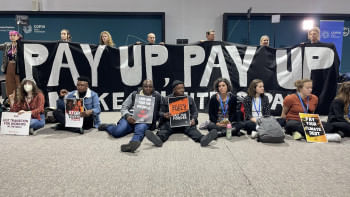House of Honey


Pushing through the front door, visitors' eyes would be greeted by a range of unfamiliar trees. A mangrove garden has been set up at the front -- with saplings collected from the Sundarbans. But the main attraction of the place is the bees -- showcased in a way that visitors can see firsthand where they're collecting honey from.
This scene is set in front of Syed Mohammad Moinul Anwar's "Alwan Honey Museum and Research Center" at Joypahar Abasi on Sarson Road in Chattogram. The institution has been established on Moinul's own initiative in a room of his house.
Visiting the location recently, this correspondent saw hundreds of honey jars of different sizes, colours, and varieties neatly arranged. Different species of bees have been stored in small bottles for research purposes.
Moinul has been researching honey for the last 17 years. According to him, there are 70 types of honey in his collection depending on the crop, season, and bee species. For medicinal and research purposes, the museum also has rare honey from stingless bees and 20-year-old Khalisha flowers.
"I have visited almost every district to learn about the different colours and ways to identify adulterated and pure honey," he said.
Apart from honey, he said he has collected the five common species of bees prevalent in Bangladesh from his travels and stored them in formalin for further research. Flowers that produce honey have also been dried and stored.

Recently, Chittagong University's botany department has signed an agreement with the centre for their students' research. Discussions are underway with the authorities of Sher-e-Bangla Agricultural University as well, he added.
Elaborating on the start of this fascination with honey, Moinul said, "When my father was sick during 2004-2005, I couldn't find a single source where they were selling unadulterated honey." Thus, he began his journey of collecting honey out of necessity, he added.
Moinul said in addition to his laboratory, he has assisted in setting up 11 laboratories in Dhaka and the Sundarbans. He also arranges free training sessions.
He further said, "At present, I am doing research on bee pollen, royal jelly and bee venom."
Although bee pollen has medicinal properties, it remains to be seen whether these can be collected and marketed. Attempts are being made to collect bee venom in the laboratory, he added.


 For all latest news, follow The Daily Star's Google News channel.
For all latest news, follow The Daily Star's Google News channel. 



Comments